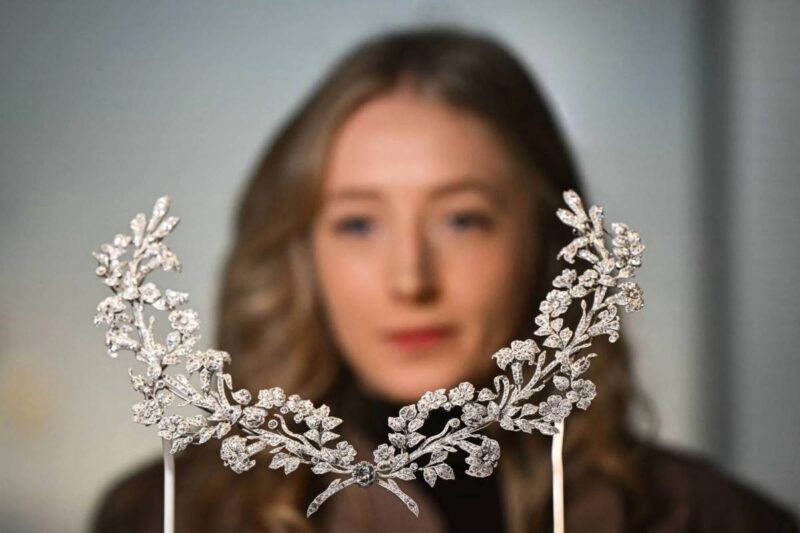The Victoria and Albert Museum will open Cartier: The Exhibition on 12 April 2025, featuring over 350 pieces created by the French jewellery house. The exhibition traces Cartier’s development from its origins as a Paris-based family firm to an international jeweller, with an emphasis on its long-standing connections to the British royal family.
Curated by Helen Molesworth, the show brings together loans from international institutions, private collectors, and the Royal Collection. The display presents examples of Cartier’s design and craftsmanship from the early 20th century to the present day.
Royal Patronage and Historic Commissions
Cartier’s relationship with the British monarchy began in 1902, when King Edward VII granted the brand a royal warrant two years after it opened its first London store. The exhibition highlights several significant commissions made for royal clients across generations.
Among the pieces on display is Queen Elizabeth II’s Williamson brooch, which incorporates a 23.6-carat pink diamond given to her as a wedding gift by Canadian geologist Dr John Williamson. The stone was cut and set by Cartier in 1953 into a floral brooch designed by Frederick Mew, Cartier’s British designer. The exhibition includes Mew’s original sketches, shown for the first time.
Also featured is the Scroll Tiara, created for the Countess of Essex for King Edward VII’s coronation. The design is an example of Belle Époque style and was among Cartier’s earliest aristocratic commissions in Britain. Princess Margaret’s Rose Brooch, commissioned in 1938 and gifted to her by her parents when she was eight years old, is also included in the exhibition. The brooch was worn throughout her life, including during her 21st birthday portrait.
Also included is Princess Anne’s Pineflower Tiara, commissioned in 1937 by King George VI for Queen Elizabeth (later the Queen Mother). The tiara is made of platinum, diamonds, and aquamarines and is now part of the Princess Royal’s collection.
Celebrity and Private Collections
Alongside royal pieces, the exhibition includes jewellery linked to public figures and private collectors. Princess Grace of Monaco’s diamond engagement ring—worn in her 1956 film High Society—is shown alongside a set of ruby clip brooches gifted to her on her wedding day, which can be combined into a tiara.
Other items include the Flamingo Brooch commissioned by the Duke of Windsor for Wallis Simpson in 1940, incorporating rubies, sapphires, emeralds, and citrine. Jacqueline Kennedy’s 1962 tricolour gold and sapphire Tank watch, later acquired by Kim Kardashian, is also featured.
The American heiress Barbara Hutton’s jade necklace, created by Cartier from 27 Burmese jade beads in 1933, and a multi-tiered diamond necklace commissioned by the Maharaja of Patiala in 1928, are also on display. These commissions illustrate the international scope of Cartier’s clientele and the firm’s work for private patrons during the interwar years.
Craftsmanship and Innovation
The exhibition also covers Cartier’s design development, including work by Frederick Mew, a designer active with the firm from the late 1920s to 1971. Examples include a black opal tiara formerly owned by Mary Alice Cavendish, Duchess of Devonshire, and a diamond brooch from 1910.
Several designs on display feature gems sourced globally by the Cartier brothers, including emeralds from Colombia, sapphires from Sri Lanka, and diamonds from India and South Africa. The exhibition includes reference to the historical gem trade networks Cartier operated within, though the broader context of colonial-era sourcing is not a focus of the display.
The final section of the exhibition is dedicated to tiaras from the early 1900s to the present day. Molesworth said: “You could spend hours in each room. To see this collection of objects together is very unusual. It’s very special.”



